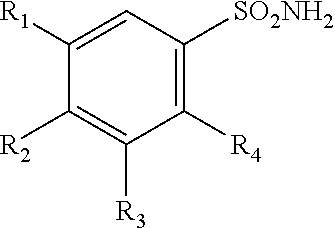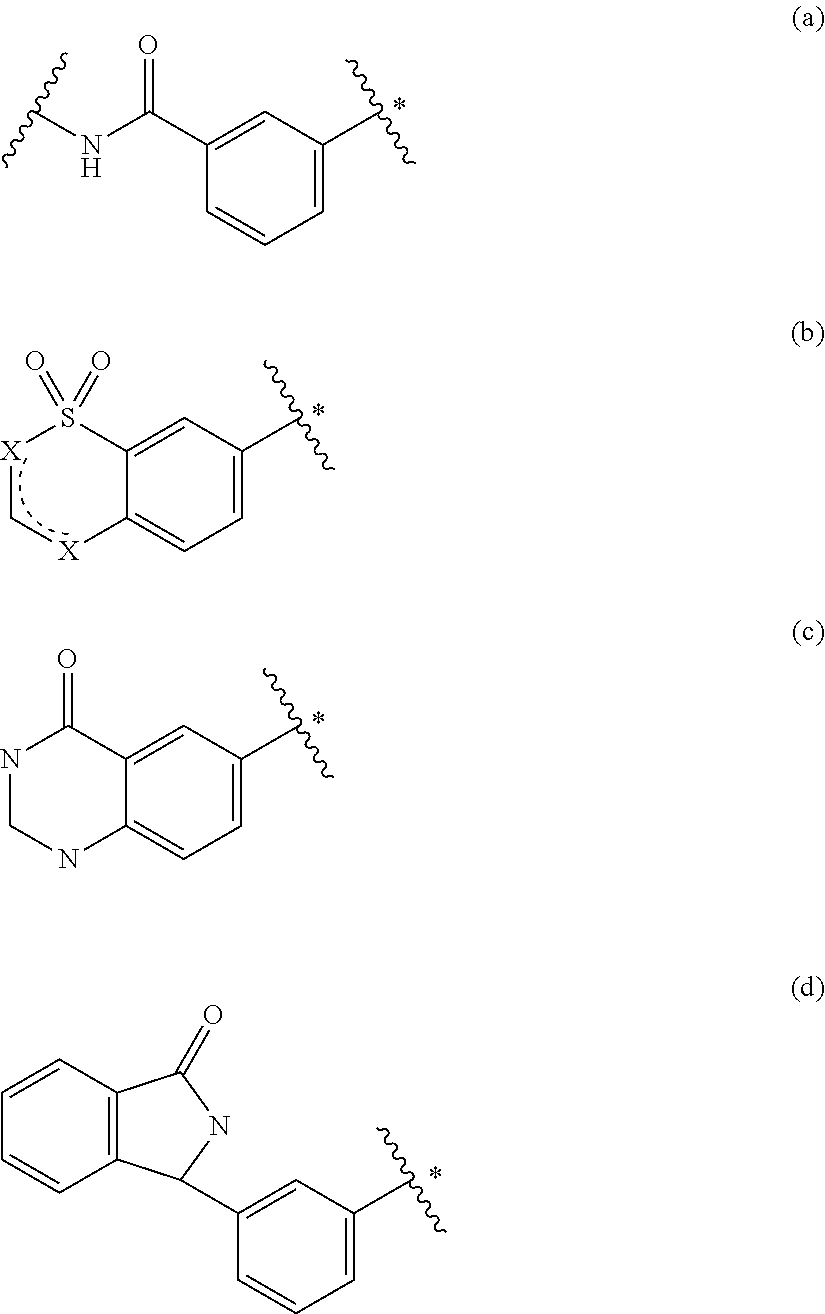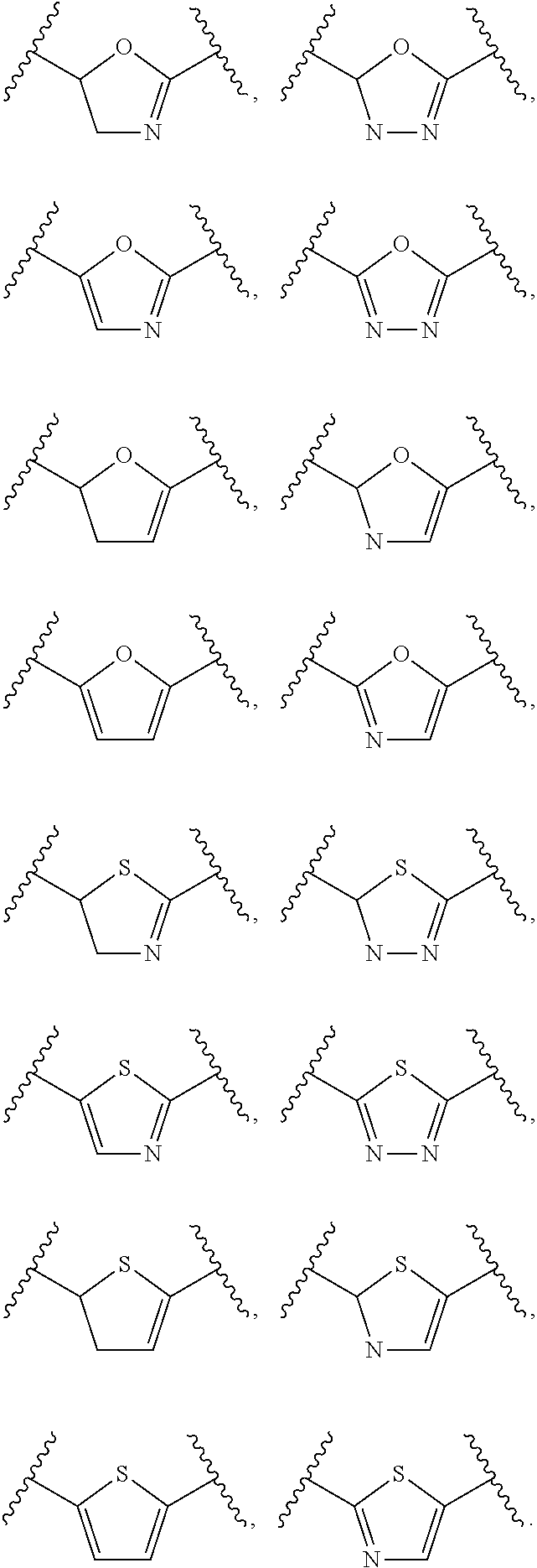Insulin sensitisers and methods of treatment
a sensitiser and insulin technology, applied in the field of therapy, can solve the problems of inability to provide similar benefits in vivo, cais which are also loop diuretics or thiazide diuretics, etc., and achieve the effects of improving or ameliorating insulin resistance, reducing elevated blood glucose levels, and improving treatment
- Summary
- Abstract
- Description
- Claims
- Application Information
AI Technical Summary
Benefits of technology
Problems solved by technology
Method used
Image
Examples
example 1
Effect of Dichlorphenamide on Glucose Uptake in 3T3-L1 Adipocytes
[0185]3T3-L1 adipoctyes (non-infected) in 96-well plate format were serum-starved overnight (16 to 18 hr) in DMEM containing 0.2% BSA and were untreated or treated with dichlorphenamide at a concentration of 10 μM. Dichlorphenamide was added during serum-starvation. Cells were then washed twice in Dulbecco's PBS, pH 7.4 (Gibco) containing 0.2% (w / v) RIA-grade BSA, 0.5 mM MgCl2 and 0.5 mM CaCl2. Insulin at 0, 0.5 and 10 nM was added for 20 min at 37° C. Uptake of 50 μM 2-deoxy glucose and 0.5 μCi 2-deoxy-[U-3H] glucose (NEN, PerkinEbner Life Sciences) per well was measured over the final 10 min of insulin stimulation. The reaction was stopped upon addition of ice-cold 80 μg / ml phloretin in PBS, pH 7.4 and cells were solublised in 0.03% (w / v) SDS. Counts per minute (cpm) were measured by scintillator counter. These results are presented below in Table 1-1.
[0186]The data in Table 1-1 shows that dichlorphenamide enhanced b...
example 2
Effect of Dichlorphenamide on Glucose Tolerance in Obese Psammomys obesus (Israeli Sand Rats)
[0188]The outbred Israeli sand rat, Psammomys obesus is a unique animal model for the study of obesity and diabetes. When housed under standard laboratory conditions, a proportion of Israeli sand rats become obese and develop type 2 diabetes spontaneously, without requiring high caloric feeding like the diet-induced obese mouse model, or as a consequence of a mutation in a particular gene as in the db / db mouse model. In this regard their evolution into a diabetic state closely resembles the environmental and polygenic human condition. Type 2 diabetic P. obesus are also profoundly insulin resistant, as measured by the area under the blood glucose curve during an oral glucose tolerance test (OGTT). In addition, a proportion of the animals remain lean and healthy under these same conditions, while others develop a range of intermediate phenotypes. This response is similar to that seen in human ...
example 3
Effect of Dichlorphenamide on Fasting Blood Glucose Levels in Diet-Induced Obese (DIO) Mice (Mus Musculus)
[0193]Mice of the strain C57BL / 6J fed with a commercially available high fat diet (45% fat) for 10 weeks develop obesity (body fat>20% body weight), mild hyperglycaemia (plasma glucose concentrations of 8-10 mM), and glucose intolerance (area under the plasma glucose curve of an intraperitoneal glucose tolerance test of >1200 mM·min). This animal model, the Diet-induced obese mouse model, (DIO) is extremely useful for studying insulin resistance in a pre-diabetic state with a strong environmental component. Insulin resistance in this model is characterised by an increase in the area under the blood glucose curve following an intraperitoneal injection of glucose (IPGTT), and the magnitude of the reduction in the area of this blood glucose curve following treatment with a compound is taken as a measure of the efficacy of that compound in improving the animal's glucose metabolism.
C...
PUM
| Property | Measurement | Unit |
|---|---|---|
| concentrations | aaaaa | aaaaa |
| weight | aaaaa | aaaaa |
| weight | aaaaa | aaaaa |
Abstract
Description
Claims
Application Information
 Login to View More
Login to View More - R&D
- Intellectual Property
- Life Sciences
- Materials
- Tech Scout
- Unparalleled Data Quality
- Higher Quality Content
- 60% Fewer Hallucinations
Browse by: Latest US Patents, China's latest patents, Technical Efficacy Thesaurus, Application Domain, Technology Topic, Popular Technical Reports.
© 2025 PatSnap. All rights reserved.Legal|Privacy policy|Modern Slavery Act Transparency Statement|Sitemap|About US| Contact US: help@patsnap.com



